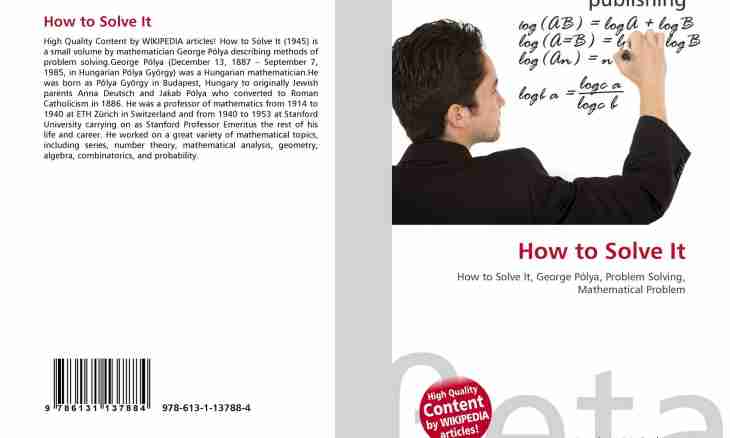To solve the equation − means to find everything unknown at which it addresses in right numerical equality. To solve the mathematical equation with modules, it is necessary to know definition of the module. The sign of the module can just be removed if submodular expression is positive. If expression under the module is negative, it reveals with the sign "minus". It means that the module – always positive size.
Instruction
1. Try to get rid of modules in the equation, being based directly on definition of the module. Consider two cases, comparing submodular expression to zero. Present each of options in the form of the system containing the condition expressed by inequality and the equation with the module opened according to a condition. Issue the common decision in the form of set of the received systems.
2. Let, for example, the equation | f (x) | - be given to k (x) = 0. To open the module | f (x) |, it is necessary to consider two cases: f(x) ≥ 0 and f(x) ≤ 0. During the performing of the first condition | f (x) | =f(x), observance of the second condition gives | f (x) | = - to f (x). So, the set of two systems turns out: f(x) ≥ 0, f(x) - k(x) = 0; f(x) ≤ 0, - f(x) - k(x) = 0. Having solved both of these systems and having united the received results, receive the answer. By the way, solutions of systems can be crossed, it should be considered at record of the answer not to duplicate the values x satisfying to the equation.
3. Theoretically, using the method stated above, it is possible to solve any equation with modules. But if under modules simple expressions are written down, it is expedient to solve the equation in shorter way. Draw a numerical straight line. Note on it all "zero" submodular expressions. For finding of "zero" equate each of submodular expressions to zero and for each of the turned-out equations find x.
4. So you receive a numerical straight line with the points noted on it. They break it into several pieces and beams, on each of which all expressions standing under the sign of the module are constant according to the sign. Now, defining this sign for each of submodular expressions, it is necessary to open modules.
5. To define the sign of expression, substitute in it instead of x any point from the set interval, not coincident with one of its ends. It was necessary to solve the turned-out equation further and to choose those values x which satisfy to the considered interval.
6. Example: | x - 5 | = 10. Submodular expression addresses in zero at x = 5. On a numerical straight line it is possible to note arches beams (-∞; 5] and [5;+ ∞). On the left beam the module reveals with the sign "minus", on right − with the sign "plus". Thus, x ≤ 5, - x + 5 = 10; x ≥ 5, x - 5 = 10.
7. The equation - x + 5 = 10 has the decision x =-5. This number falls under an interval x ≤ 5 therefore x =-5 will go to the answer. The solution of the equation x - 5 = 10: x = 15. Number 15 satisfies to inequality x ≥ 5 therefore x = 15 goes to the answer too. At the end of the decision it is necessary to write down the answer: x =-5, x = 15.

